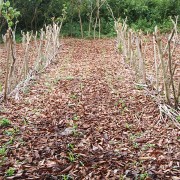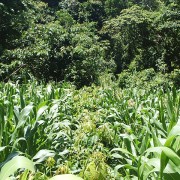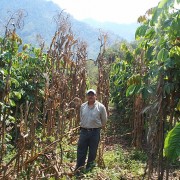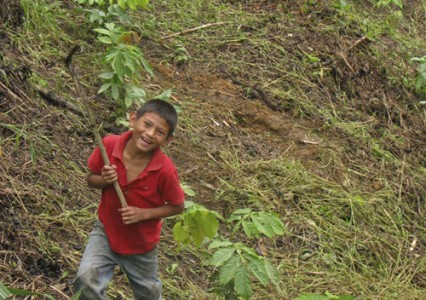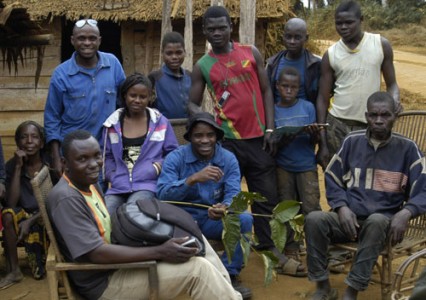How does it work and why does it matter?
See for yourself by watching this compilation of 5 short films which tell the story of how and why Inga Alley Cropping was invented and just how it can revolutionize the fight to halt slash & burn and protect the rainforest. Alternatively, read on for a full written explanation.
What is Slash and Burn?
Slash and burn is a subsistence farming method used by millions of families in the tropics in which families cut down and burn an patch of forest in order to create an area of fertile soil on which they can grow their food. However, the soil fertility doesn’t last. Once cleared of trees and exposed to the strong tropical climate, the bare soil is rapidly stripped of nutrients. The first year slash and burn generally gives a good crop, the next year less so and, by the 3rd year, crops often fail completely. This forces families who depend on slash and burn to keep clearing fresh areas of rainforest every few years, just to survive.
What is Inga Alley Cropping?
Inga Alley Cropping is the revolutionary alternative to slash and burn developed by Inga Foundation’s Director, Mike Hands, based on the insights gained through over a decade of research into slash and burn in partnership with Cambridge University. Of the different potential alternatives investigated by Mike Hands, the only truly sustainable system to emerge from years of scientific research was alley cropping using nitrogen-fixing tree species from the genus Inga. Inga Alley Cropping is capable of maintaining soil fertility and good harvests year after year, thereby breaking the cycle of slash and burn and allowing families to gain long term food security on one piece of land.
A year in Inga alley cropping:
Once the Inga alleys have developed, the Inga trees are pruned at chest height. They have, at this stage, dominated the site and shaded out the weeds. The branches are stripped of leaves and used as mulch, thus protecting the soil and preventing further weed growth. Larger branches are used as firewood, allowing families to obtain all the wood they need for cooking from the Inga plots and thereby tackling another important cause of deforestation. The crop is then planted through the mulch within the pruned alleys. As it grows the Inga also recovers and regrows, providing the crop with some shade and protection from the sun. Once fully matured the crop is harvested. The Inga is then left to grow until the next planting season arrives, by which time they have fully recovered and the whole cycle is ready to be repeated, starting with pruning the Inga alleys once more.
This system delivers huge benefits through ensuring a reliable harvest year after year from the same plot of land with minimal labor required. By recreating the conditions naturally found on the forest floor, Inga out-competes the aggressive invasive grasses which normally dominate the farmers’ plots. This biological weed control is hugely important as without it securing a harvest can require a huge amount of labor in terms of weeding per year. In fact, it is often the combination of this takeover by weeds, as well as the loss of fertility, that forces farmers to abandon their plots and clear new areas of forest.


